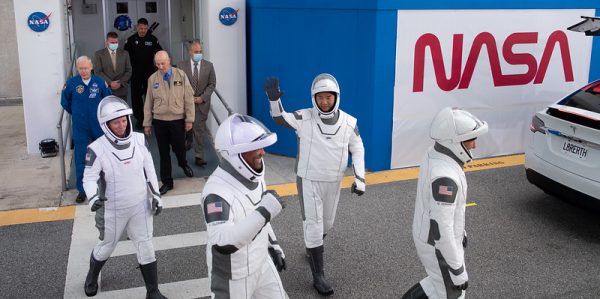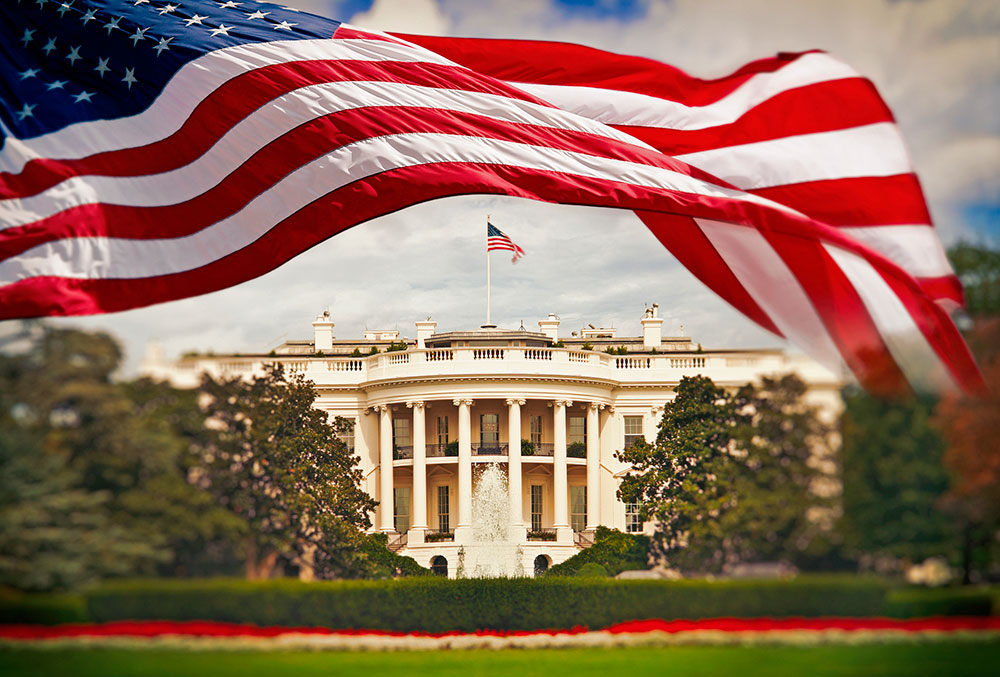There are many policy actors within the US innovation system. In this article Mark Knell describes and illustrates the most important research and innovation policy actors and interactions between the different policy levels and co-ordination structures of the American science, technology and innovation (STI) system.
Mark Knell, Research Professor, NIFU
Click here for an updated version of this article!
STI policy issues are normally at the department level in the US, but they can reach the presidential level if they involve multiple agencies and have budgetary, economic, national security, or foreign policy dimensions.
The United States has a tripartite governing system with a legislative branch that makes laws, an executive branch that carries out laws, and a judicial branch that interprets laws. Congressional committees draft legislation, some of which is relevant to STI policies.
Congressional committees
The House Committee on Science, Space, and Technology, which has a wide range of STI policy areas including energy, astronautical and civil aviation, environmental, and marine research, etc., and the Senate Committee on Commerce, Science, and Transportation includes science, engineering, and technology research and development and policy are the most important.
The House Committee on Energy and Commerce and the Senate Committee on Health, Education, Labor, and Pensions consider biomedical research policy. And House Armed Services Committee and Senate Committee on Armed Services include military research and development.
The president’s advisory institutions
Executive power in the federal government rests with the president of the United States. Several departments of the executive branch deal with STI policy.
The Office of Science and Technology Policy (OSTP) is a department of the United States government, within the Executive Office of the President (National Science and Technology Policy, Organization, and Priorities Act of 1976). Its offices are in the White House. It has a broad mandate to advise the President on the impacts of science and technology on domestic and international affairs and to develop and implement sound STI policies and budgets.
President Donald Trump filled the post of Science Advisor in January 2019 after leaving the post vacant for two years. The Science Advisor leads the OSTP. The first Science Advisor appointed was Vannevar Bush in 1941 (see Magnus Gulbrandsen’s article on Bush) and the current one is Kelvin Droegemeier.
The President’s Council of Advisors on Science and Technology (PCAST) has a broad mandate to advise the US President on science and technology. OSTP administers PCAST, which makes policy recommendations on various STI issues. Trump did not reconstitute PCAST until October 2019, when he appointed the first seven members under his administration. President George H. W. Bush appointed the first PCAST in 1990
The National Science and Technology Council (NSTC) coordinates science and technology policy across various parts of the Federal Government. The President is a co-chair (the second one has been vacant under Trump) and there are six committees, each with given set of tasks. In 2009 the National Economic Council and Office of Science and Technology Policy of the Obama administration issued the Strategy for American Innovation. It was updated in October 2015.
The federal departments and agencies
There are 15 executive departments in the cabinet, of which the Departments of Education, Health and Human Services, Agriculture Energy, and Defence are most relevant.
Important agencies include the National Science Foundation (NSF) and National Institutes of Health (NIH). The NSF supports fundamental research and education in all the non-medical fields of science and engineering and the NIH covers biomedical research.
The Department of Agriculture (USDA) has four agencies that does research on agriculture and related issues. The Department of Energy does energy-related research, including nuclear research, and it directs research in genomics. This agency supports more research in the physical sciences through its system of National Laboratories than any other agency.
There are two key players in the US federal innovation system. The first is the Defence Advanced Research Projects Agency (DARPA). This agency handles the development of emerging technologies for use by the military. Its mission statement is «to make pivotal investments in breakthrough technologies for national security». About a third of the total government R&D budget forwent to defence activities in 2019, or about 50 billion US dollars.
The second important player is the National Aeronautics and Space Administration (NASA). This is an independent agency of the US Government responsible for the civilian space program, aeronautics, and aerospace research, as well as astrophysics and climate related issues. The President of the United States appoints NASA’s administrator, subject to approval of the US Senate. The US gave $10 billion for the exploration and exploitation of space.
Finally, the National Academies of Sciences, Engineering, and Medicine (National Academies) are private, non-profit organisations that supplies nonpartisan, objective guidance for decision makers on pressing issues in science, engineering, and medicine.

The state level
It is important to keep in mind that the Unites States is a federation, and that the individual states have their own science, technology and innovation policy measures and institutions. Responsibility for regional innovation policies belongs to the states. Initiatives to promote industrial clusters will, for instance, normally take place on the state level. There may also be science programs on the regional level, as well as laws and regulations aimed at encouraging local research and innovation.
Traditionally, education has primarily been the responsibility of parents and local and state government in the US, which means that education policy – the university level included – for the most part is a regional responsibility.
What can we expect in 2021?
Congress created the Office of Technology Assessment (OTA) in 1972 but dismantled it in 1995. The OTA offered non-partisan advice on innovative technologies to legislators and STI programme evaluation. Republican legislators, who were in control of both the house and senate, considered the OTA as wasteful and hostile to GOP interests. There are many calls to revive the OTA, including the House, the Brookings Institution and Andrew.
Trump has personally shown little interest in, or even respect for, research and innovation policy. Vacant appointments and dubious choices in the Cabinet related to STI policy supports this view, as does his incompetent handling of the Covid-19 crisis. Yet, funding for the NSF and NIH has risen more than twice as much as in the Obama years. And research on artificial intelligence (AI) and in quantum information has risen even faster (See Jeffrey Mervis, doi:10.1126/science.abf1919).
There is every reason to believe that the Biden presidency will have a proactive STI policy. We can expect more R&D spending, more regulation, and more multilateralism. We may also expect the Democrats to try to encourage the entrepreneurial state, innovation, and social justice. Further details will follow in the new year.

Gross domestic expenditure on R&D (GERD) was 581.6 billion US dollars in 2018. This was 40% of the OECD total. GERD as a percentage of GDP was 2.83%, or about 0.4 percentage points above the OECD average.
Main photo of The White House by Jarvik.

